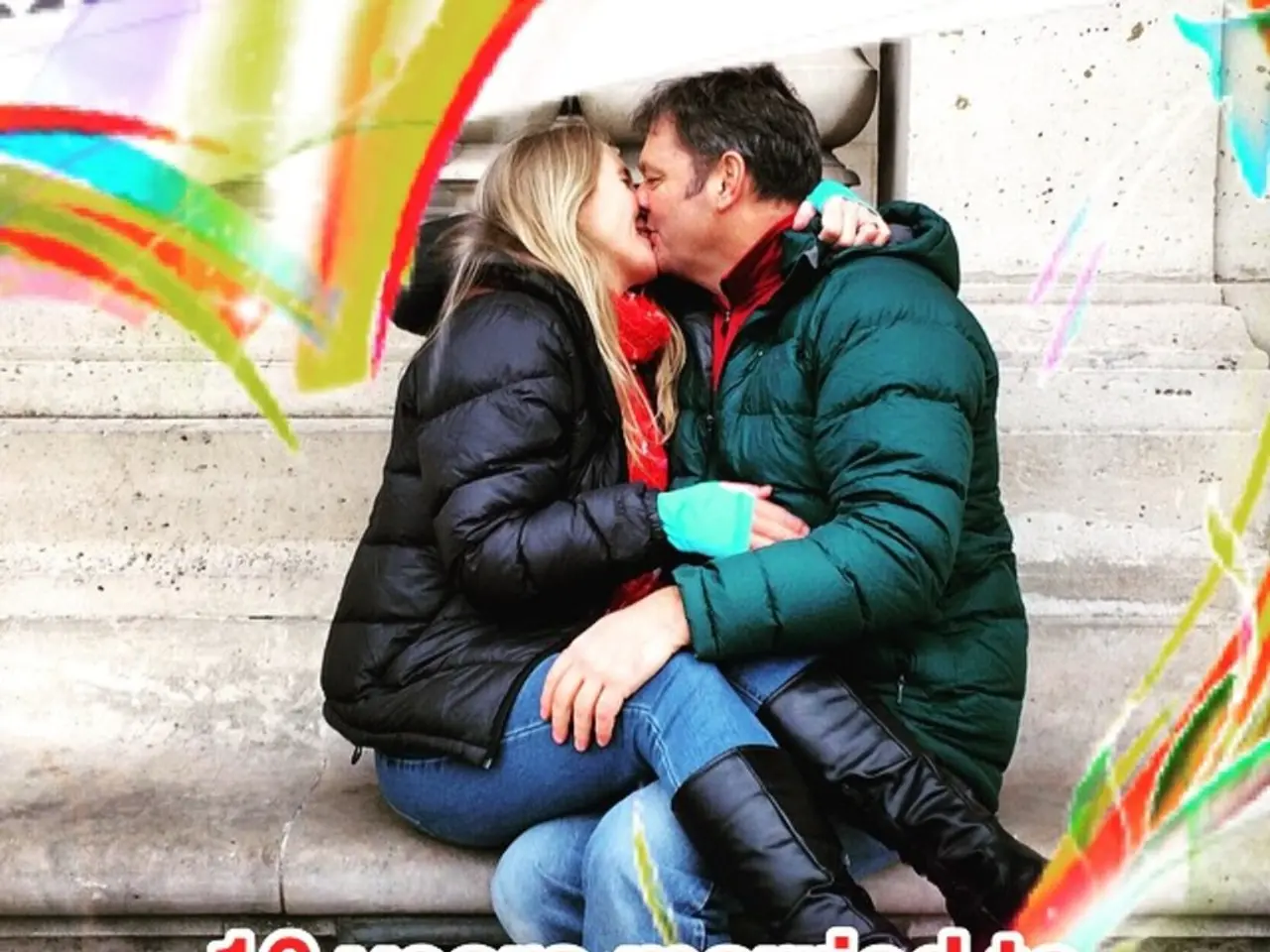Exploring Intimate Bonds: Disentangling the Mysteries of Human Bonding
In a world that often seems divided, the #all4Love campaign encourages people to consciously share love, creating a ripple effect of positivity and connection. This movement invites participants to post a picture or video using #all4Love, write a love letter to the world, and inspire others to join in.
Love, it seems, is more than just romantic gestures and fleeting passion. It has been a crucial part of human survival and evolution for centuries, uniting people with compassion and a shared purpose, making the world more connected.
The science behind love involves complex brain systems and neurochemicals such as dopamine and oxytocin that regulate reward, motivation, and bonding. In romantic love, dopamine-rich brain areas like the ventral tegmental area (VTA), nucleus accumbens (NAc), and caudate nucleus activate, producing intense feelings of desire and reward similar to addiction, which motivates the longing for union with a partner[1][2].
Oxytocin, often called the "bonding hormone," plays a key role in forming long-term emotional attachments and trust between partners, especially during sustained relationships[4]. Both men and women experience changes in brain chemistry when falling in love; for example, men may show dopamine-driven obsessiveness and serotonin changes linked to heightened emotional states[4].
Love also impacts emotional processing regions such as the insula and amygdala, which mediate interoception (bodily awareness) and emotional memory, respectively. Positive and negative aspects of relationships activate these areas, with traumatic breakups triggering brain patterns akin to trauma responses, involving heightened activity in the amygdala and hippocampus[3].
To nurture love in everyday life, simple practices grounded in its neuroscience include building trust and bonding through affectionate touch and shared experiences, engaging in enjoyable activities together that activate the brain’s reward system, open, empathetic communication that fosters emotional connection, and mindfulness of one's partner’s feelings and needs, enhancing emotional attunement mediated by insula activity[1][2][4].
Love directly impacts our brain's chemistry, making it essential to emotional well-being. Simple ways to show love every day include really listening, giving a hug, performing small gestures, and spending quality time together. Expressing gratitude can make someone feel truly valued and appreciated, while supporting someone through tough times is one of the most profound ways to show love and commitment.
Giving love is just as powerful as receiving it, and expressing love often leads to feelings of deep connection, fulfillment, and gratitude. Love is an endless cycle of positivity that enriches both the giver and the receiver.
According to a study on love, quality time, words of affirmation, and physical affection are the top three ways people feel love[5]. Sneha Iyer, a Digital Marketing Professional, Content Writer, and Artist, is dedicated to inspiring positive change through her words, emphasizing the importance of understanding love, embracing its many forms, and actively sharing it to create deeper connections and a more compassionate world.
References:
[1] Bartels, A., & Zeki, S. (2004). Neural correlates of romantic love. Nature Neuroscience, 7(12), 1115-1118.
[2] Fisher, H., Aron, A., & Brown, L. L. (2005). Romantic love: an fMRI study of a neural mechanism for mate choice. Journal of Comparative Neurology, 493(1), 58-62.
[3] Coan, J. A., & Allen, J. J. B. (2010). Neural mechanisms underlying the healing power of touch: oxytocin and the neurobiology of affiliative behavior. Psychoneuroendocrinology, 35(10), 1327-1331.
[4] Hull, C. L. (1951). The meaning of love: a study of human affection. New York: Knopf.
[5] The Five Love Languages: The Secret to Love That Lasts, by Gary Chapman (1992)
- In a slightly fractured world, the #all4Love campaign urges the community to express love deliberately, propagating a wave of positivity and solidarity.
- This call encourages people of all ages to share a picture or video, pen a love letter to the world, and inspire others to take part.
- Sneha Iyer, a Digital Marketing Professional, Content Writer, and Artist, champions this movement, focusing on promoting loving relationships and crafting a more empathetic world.
- Scientifically speaking, love involves intricate brain systems and neurochemicals like dopamine and oxytocin that manage reward, motivation, and bonding.
- Romantic love stimulates dopamine-rich brain areas such as the ventral tegmental area, nucleus accumbens, and caudate nucleus, causing intense feelings of desire and reward.
- Oxytocin, often referred to as the "bonding hormone," significantly contributes to creating long-term emotional bonds and trust between partners.
- Love touches emotional processing regions like the insula and amyggdala, which are responsible for things like bodily awareness and emotional memory.
- Engaging in simple acts of love, such as showing gratitude, giving hugs, and spending quality time together, can enhance emotional well-being.
- By fostering bonding, trust, and communication, along with being mindful of partners' feelings, one can cultivate love in everyday life.
- Apart from romantic love, appreciation, family ties, and connections with the youth and elderly are integral parts of a united, compassionate community.
- The impact of love extends beyond romance, permeating health-and-wellness, lifestyle, fashion-and-beauty, love-and-dating, relationships, and even social media and entertainment, making it an essential element of modern pop-culture.




